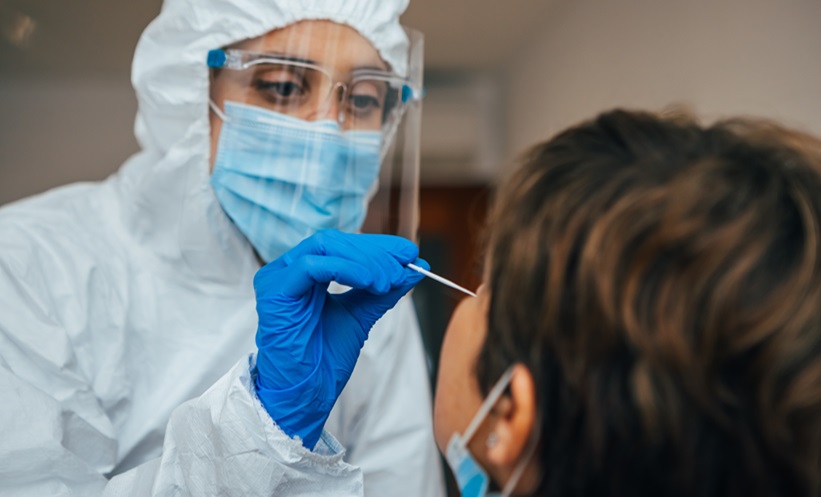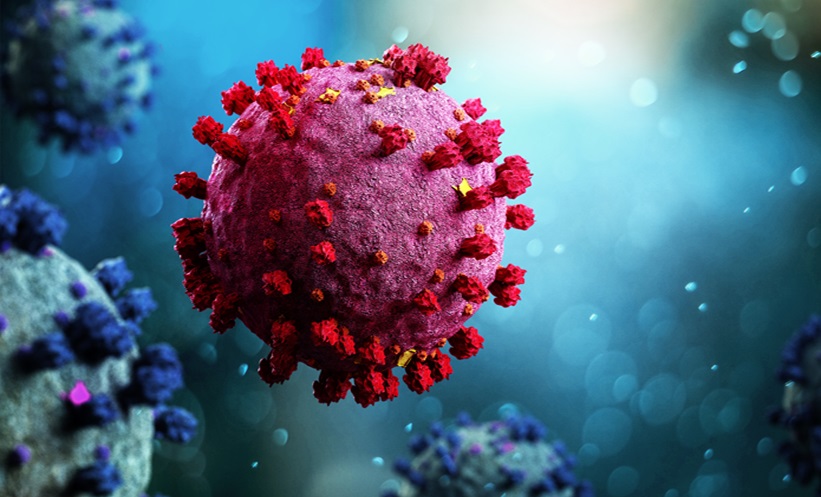DATA science dominated the discussions at this year’s European Academy of Allergy and Clinical Immunology (EAACI) Congress 2024. More than 8,000 attendees gathered for groundbreaking research and the latest advances in allergy and clinical immunology under the theme ‘Revolutionising Patient Care Through the Power of Data Science’.
The renowned Congress was held at Feria de Valencia, Spain, a highly esteemed convention and exhibition centre known for its modernity and versatility, in a city with rich historical heritage. The main aim of the Congress was to highlight the importance of data science in allergy and clinical immunology, particularly concerning the development of personalised medicine. Revolutionary research on this topic was showcased during the congress against the backdrop of Valencia’s beautiful architecture and Mediterranean coast.
Given the overarching theme of the Congress, it was perfectly fitting that experts in the field were welcomed by a mistress of ceremonies like no other – a computer-animated, AI robot, the self-proclaimed ‘multi-lingual cousin of ChatGPT’. With the audience captivated by the entertaining and impressive start to the Opening Ceremony, EAACI President, Stefano del Giacco, emphasised the importance of data science, AI, and digital approaches to transform precision medicine, immunotherapy, and healthcare. He noted that data science is transforming the way we understand and treat allergies.
The Vice President of Congresses, Mo Shamji, explained that the EAACI Congress 2024 is a chance for knowledge exchange between colleagues in the field, and offers a unique experience of learning, networking, and experiencing. Attendees had the opportunity to take part in over 150 sessions including cutting-edge abstract presentations, networking events, and practical workshops. In addition to the use of data science for the development of personalised medicine, key topics at this year’s congress were AI, allergen immunotherapy, immune modulators, biologicals, prevention of allergic diseases, novel treatments for allergy and asthma, innovative approaches in clinical trials, ‘One Health’, and more.
The award presentations commenced with the Clemens von Pirquet Award for Clinical Research, which was presented to Mariana Castells from Harvard Medical School, USA. Following this, the Daniel Bovet Award for Treatment and Prevention was awarded to Philippe Eigenmann, University Hospitals of Geneva, Switzerland. Emma Guttman-Yassky from the Icahn School of Medicine at Mount Sinar, New York, USA, was then awarded the Paul Ehrlich Award for Experimental Research, and Carmen Vidal from the University of Santiago de Compostela, Spain, was recognised for her work with the Charles Blackley Award for the Promotion of the Speciality.
Each year, EAACI honours excellence in basic and clinical research by awarding the title of EAACI Fellow to members who have made exceptional contributions in their field. These fellows will constitute an elite advisory board, which the Academy will consult upon in the coming years. The EAACI Clinical Fellow was awarded to Santiago Quirce from La Paz University Hospital, Madrid; George Du Toit from King’s College London, UK, and Margitta Worm from Charité, Medical University, Berlin, Germany. To recognise excellence in basic research, the EAACI Research Fellow was awarded to Domingo Barber, University San Pablo, Madrid, Spain, and Liam O’Mahony, University College Cork, Ireland.
Gilles Augusto, from Insel Hospital, Bern, Switzerland, was presented with the Allergy Award, for his paper titled ‘In vitro data suggest that Indian delta variant B.1.617 of SARS-CoV-2 escapes neutralisation by both receptor affinity and immune evasion’, as this was the most cited article in the EAACI Allergy journal between 2022 and 2023.
To wrap up the inspiring Opening Ceremony, del Giacco presented two awards which recognise exceptional young scientists, to promote innovation and breakthroughs in allergy research. Firstly, the prestigious EAACI PhARF 2024 Award to Stefan Schülke from the Paul-Ehrlich-Institut in Langen (Hesse), Germany, for his work on immune modulation with the use of novel therapeutics and adjuvants. Secondly, Urszula Radzikowska from the Swiss Institute of Allergy and Asthma Research was awarded the EAACI AllergoPharma Research Award, for her key publication in the field of immune metabolism.
Read on for more highlights from EAACI 2024, and return next year for our coverage of EAACI Congress 2025 in Glasgow, under the new presidency of María José Torres!
Avocado Allergy: A Hidden Anaphylaxis Trigger
FOOD allergies are a leading cause of anaphylaxis, especially in adults, with seeds and nuts being the most commonly reported triggers, according to a study presented at EAACI 2024.
However, there is only limited information on other foods that can induce anaphylaxis. Avocado allergy, often associated with latex cross-reactivity, is not frequently documented in the literature. Only three allergenic molecules in avocados have been identified, and there has been just one recorded case of anaphylaxis caused by avocados.
This study discussed the case of a 28-year-old previously healthy patient who was admitted to the emergency department due to severe anaphylaxis. This condition included respiratory, cardiovascular, and neurological symptoms, which were triggered by accidental avocado ingestion. The patient required an adrenaline infusion and a 48-hour stay in the intensive care unit.
During the patient’s assessment, four previous anaphylactic reactions were identified: three were related to avocado and one to a particular SARS-CoV-2 vaccine. Allergy testing showed a serum IgE level of less than 40 kU, and a multiplex test did not detect any IgE value greater than 0.10 kU.
No specific allergen was identified, so a two-dimensional immunoblot was conducted using the patient’s serum to detect selective IgE antibodies against avocado proteins. Eight proteins have been found to be reactive so far.
This case underscores the seriousness of avocado allergies and the necessity of thoroughly examining patients with a history of anaphylaxis. Some sensitising molecules may still need to be identified, making diagnosis and classification more challenging.
Platelet-Leukocyte Interactions: New Mechanisms in Asthma Pathogenesis
RECENT research has indicated the role of free platelets and their complexes with leukocytes in the pathogenesis of allergic asthma. These results were presented at the 2024 EAACI Congress. Platelets have been observed to play significant roles in leukocyte extravasation, tissue remodelling, and lung function, as demonstrated in in vivo models of allergic pulmonary inflammation.
Patients with asthma often present with elevated levels of platelet-leukocyte complexes and experience mild thrombocytopenia upon allergen exposure, accompanied by an increase in platelet-derived mediators. These findings suggest localised recruitment and potential interactions of platelets and their progenitor megakaryocytes with surrounding structural cells in the lungs. Both in vivo models and studies involving human patients reveal that platelets are instrumental in the development and exacerbation of allergic airway inflammation, yet their specific contributions remain not fully understood. A recent experimental series was conducted to investigate the role of platelets in the allergic airway inflammation phenotype in vivo and in patients with asthma in response to house dust mites (HDM).
The study utilised female BALB/c mice, treated intranasally with HDM extract or a phosphate-buffered saline control. To examine the effects of platelet depletion, mice were administered a control IgG or a platelet-depleting antibody intravenously prior to HDM or phosphate-buffered saline treatments.
Blood and bronchoalveolar lavage (BAL) samples were collected on specific days to quantify platelets and perform differential leukocyte counts.
Additionally, plasma IgE and BAL interleukin (IL)-4 and IL-13 levels were measured using enzyme-linked immunosorbent assays.
Results indicated that platelet depletion effectively reduced circulating platelets during the first phase of the experiment, with recovery by Day 14. HDM exposure induced significant blood and BAL eosinophilia, which was inhibited in the platelet-depleted group. Moreover, plasma IgE and BAL IL-4 and IL-13 levels were significantly elevated in the HDM group but not in the platelet-depleted mice. Complementing the animal studies, venous blood samples from patients with asthma and control volunteers were analysed using flow cytometry. Patients with asthma exhibited mild thrombocytopenia compared to controls, with higher frequencies of granulocytes and platelet-neutrophil and platelet-eosinophil complexes.
The established asthma model and human case-control studies provide a deeper understanding of platelet involvement in allergic airway inflammation and support further work expanding on platelet involvement. Future research aims to explore potential intervention strategies and candidate mechanisms for asthma treatment, paving the way for novel therapeutic approaches.
Pink Peppercorn: Safe for Patients with Pistachio Allergy Despite High Risk
A CASE study recently presented at EAACI 2024 revealed that pink peppercorn poses low allergenic risk for patients with a severe pistachio allergy, atopic dermatitis, and indolent systemic mastocytosis (ISM).
Tree nut (TN) allergies are among the most common IgE-mediated food allergies, affecting between 0.05–4.90% of the population. TN allergies often cause mild symptoms but can also lead to severe and potentially fatal reactions.
Pistachios, part of the Anacardiaceae family, share allergenic components with cashews, mangoes, and pink peppercorns. The close phylogenetic relationship among these plants results in varying cross-reactivity rates. However, the allergenic potential of pink peppercorns has remained under investigation until now.
In this study, a 38-year-old man with atopic dermatitis, coronary heart disease, and obesity experienced a severe anaphylactic reaction after consuming pistachios. He was subsequently referred to an allergy clinic for further evaluation. The allergological work-up included prick-to-prick testing with various Anacardiaceae family members and other cross-reactive allergens. Specific IgE levels were measured when commercially available. An oral food challenge with pink peppercorn was arranged due to its widespread use without mandatory labelling. The patient, who had elevated basal serum tryptase levels (76.8 µg/L), was referred to the Department of Haematology for further evaluation.
Although imaging tests returned normal results, a bone marrow biopsy revealed dense mast cells (approximately 10%) with spindle cell morphology exceeding 25%.
Despite the absence of the KIT816V mutation in peripheral blood and bone marrow, the patient was diagnosed with ISM. The prick-to-prick testing results showed positive skin test reactions for pistachio, cashew, and pink peppercorn. Additionally, laboratory tests indicated high sensitisation to pistachio, cashew, and the major cashew allergen ana o 3, with specific IgE levels of 17.1 kUA/L. Specific IgE levels for other allergens tested negative. Despite the patient’s high-risk profile and the unavailability of specific IgE testing for pink peppercorn, an oral food challenge with up to eight peppercorns resulted in no adverse reaction.
In conclusion, the patient can safely consume pink peppercorn, highlighting its low allergenic potential even in high-risk individuals. This case underscores the importance of comprehensive allergological evaluation and patient education regarding cross-reactivity within the Anacardiaceae family. Furthermore, it emphasises the need for food manufacturers to provide adequate labelling to prevent accidental consumption by allergic individuals. The study calls for further research to fully determine the allergenicity of pink peppercorn and ensure the safety of allergic patients.
Molecular Tools in Support of Walnut Oral Immunotherapy
BEATRICE ALUTO, Institute of Sciences of Food Production-CNR, Grugliasco, Italy, presented findings from a recent study at the 2024 EAACI Congress. This study aimed to investigate the molecular alterations that take place during walnut oral immunotherapy (OIT), to determine how these changes relate to the suppression of basophil activity.
Walnut OIT is designed to help individuals tolerate walnuts, reducing the severity of allergic reactions. Despite its increasing use, the mechanisms behind OIT and its long-term effects are not fully understood. The basophil activation test (BAT) is a key tool for assessing reductions in basophil reactivity during immunotherapy.
Proteins from raw, boiled, and roasted walnuts were extracted and analysed using BAT and LDS-PAGE. The immunoreactive bands were identified using HPLC-HRMS/MS. Patients’ sera were periodically tested to monitor changes in specific IgE levels and basophil activity. The study followed 40 patients over 2 years, with serum samples taken every 3 months. The aim was to achieve a maintenance dose of 15 g of walnuts. Progress was monitored monthly using BAT.
In six patients, specific tests were conducted against walnut soluble and insoluble proteins. Immunoblotting revealed prevalent soluble proteins such as globulins, legumins, and vicilins. The analysis also suggested that oil bodies might contain oleosins. Results showed a trend of IgE reduction after tolerance development, though the decrease was gradual and required longer monitoring. Basophil activity was significantly reduced, aligning with existing literature. Patients demonstrated improved walnut tolerance behaviour over time.
While patients exhibited reduced symptoms and improved walnut tolerance, the reduction in IgE was not immediate. Basophil activity decreased significantly, indicating the effectiveness of OIT. However, long-term monitoring is essential for a comprehensive understanding of OIT’s effectiveness. This study highlights the importance of continued BAT analysis alongside OIT to ensure thorough treatment evaluation.
Acquired Angioedema is Secondary to Underlying Diseases
EFFECTIVE management of acquired angioedema (AAE) can be achieved by treating the underlying disease, according to a study from Istanbul University.
AAE typically presents without a family history and has a later onset in life. Diagnosis requires measuring C1q levels and detecting autoantibodies to C1-INH. Researchers investigated the characteristics and treatment outcomes of patients with AAE, a rare, bradykinin-mediated recurrent angioedema which often occurs secondary to lymphoproliferative or autoimmune diseases.
This study presented at EAACI 2024 aimed to present the characteristics and treatment responses of patients with AAE who experienced isolated recurrent angioedema for more than 6 weeks between January 2018–January 2024. The demographic and clinical features of the patients with AAE were evaluated. Out of 405 patients with isolated recurrent angioedema, 181 (44.69%) had bradykinin-mediated angioedema, and six (1.48%) were diagnosed with AAE. The median age of patients with AAE was 48.5 years, with an interquartile range of 32.75–60.50 years, and half of the patients were female. The underlying conditions included lymphoid malignancy in five patients and an autoimmune disease in one patient. All patients with AAE had low C4 levels. C1-INH levels were low in five patients and normal in one; however, the patient with normal C1-INH levels had low C1-INH function. C1q levels were measured in four patients, with three showing low levels and one normal.
The abdomen was the most commonly affected area in patients with AAE. Treatment for angioedema episodes included icatibant, C1-INH concentrate, or fresh frozen plasma, all of which were effective. During the investigation of a patient, long-term prophylaxis with danazol was required due to frequent attacks, leading to a decrease in attack frequency. Following the treatment of underlying diseases, three patients experienced no recurrence of angioedema, while others had attacks after an initial attack-free period. Post-treatment C4 and C1-INH levels were measured in two patients who remained attack-free after treating the underlying disease, and these levels were within the normal range.
The study highlights the importance of identifying and treating the underlying causes of AAE. Effective management of the underlying disease can lead to significant improvement in angioedema symptoms, and in some cases, complete resolution. The research underscores the need for continued patient monitoring and tailored treatment approaches to manage this rare condition effectively.
Role of Milk Allergy in Childhood Dental Health
DENTAL caries poses a widespread health challenge for children, and milk and dairy products play a pivotal role in maintaining oral and dental health. The impact of cow’s milk allergy (CMA) on dental health may be complex, and potentially influenced by changes in dietary patterns.
This study presented at EAACI 2024 aims to identify potential risk factors affecting oral health in children with CMA and ascertain whether CMA itself poses a significant risk compared to healthy controls.
The research involved 66 children diagnosed with IgE-mediated CMA, of which 56.1% were male with a median age of 39.3 months. They were compared with 44 healthy controls, of which 61.4% were male with a median age of 42.5 months. Both groups were similar in age, gender distribution, maternal education levels, daily exposure to cariogenic foods, and biochemical markers.
Children with CMA demonstrated significantly reduced intake of lactose, calcium, fluoride, and phosphorus compared to their healthy counterparts (p<0.05) but consumed higher levels of vitamin D and glucose (p<0.05). Sucrose intake although higher in the control group, did not reach statistical significance (p=0.117). Regarding dental health, the prevalence of early childhood caries, mean number of decayed, missing, and filled teeth (DMFT/DMF) scores for teeth and surfaces, and plaque index were comparable between the CMA and control groups. However, the CMA group exhibited a higher gingival index than the controls (0.8±0.3 versus 0.7±0.4, p=0.030). Exploring predictors of DMFT occurrence among patients with CMA revealed no significant differences in breastfeeding duration, oral hygiene practices, PI score, or biochemical markers between those with DMFT≥1 and DMFT: 0 (p>0.05). Notably, maternal education level emerged as a significant factor associated with DMFT≥1 (p=0.002), alongside a higher frequency of daily consumption of cariogenic foods, though this association did not reach statistical significance. Multivariate analysis identified several significant predictors of DMFT occurrence, including maternal education level, asthma diagnosis, serum 25-OH vitamin D levels, and dietary sucrose intake. Particularly, maternal education levels below eight years (odds ratio: 12.432, 95% CI: 1.160–133.261, p=0.037) and serum 25-OH vitamin D levels below 25 µg/L (odds ratio: 9.434, 95% CI: 1.682–53.549, p=0.011) were significantly linked to DMFT occurrence in children with CMA.
The study concludes that CMA itself does not appear to directly influence dental issues during early childhood, the development of early childhood caries in CMA-diagnosed children is associated with inadequate levels of 25-OH vitamin D and lower maternal education. Hence, maintaining effective preventive and therapeutic oral health programmes and monitoring vitamin D levels regularly in children with CMA is crucial.
Pollen Linked to Higher Virus Infection Rates
DURING the COVID-19 pandemic, an intriguing correlation emerged between airborne pollen concentrations and SARS-CoV-2 infection rates, particularly evident during the spring pollen season.
Prior research using a rhinovirus infection model demonstrated that pollen exposure diminishes the Type I and Type III interferon response of nasal epithelial cells, leading to heightened virus production.
Given the increasing prevalence of allergies and the continuous emergence of novel viral pathogens, understanding the implications of co-exposure to mixed bioaerosols, such as respiratory viruses and pollen, is crucial. This study, presented at EAACI 2024, aimed to explore the effects of co-exposure to pollen aerosols and coronaviruses on nasal epithelial cells. Researchers isolated nasal epithelial cells from donors with known atopy status using conchotomic surgery specimens. These cells were expanded and seeded into cell culture inserts, and airlift was performed after 5–7 days. After 4 weeks of culture at the air-liquid interface, the cultures exhibited typical differentiated nasal epithelium characteristics, including tight junctions, mucus production, and cilia formation. Individual exposure models for pollen and virus exposure were established first; subsequently, co-exposure experiments were conducted. Key readouts included cytokine and chemokine levels, and the production of infectious virus particles.
It was found that stimulation with ambrosia pollen significantly increased arlamin levels, and infection with human coronavirus 229E revealed peak infectiousness in nasal epithelial cells after 48 hours. Interestingly, exposure to various pollen types induced a higher pro-inflammatory response in nasal epithelial cells from female donors compared to male donors.
This study highlighted sex-based differences in pro-inflammatory cytokine production by nasal epithelial cells in response to pollen exposure. Additionally, the cytokine response varied between different stimulants, with pollen extracts inducing distinct cytokine profiles compared to more physiological aerosol exposures. These findings underscore the importance of considering co-exposure scenarios in understanding the immune response dynamics in nasal epithelial cells, which could inform strategies to mitigate the impact of respiratory viruses, especially in individuals with allergies.







